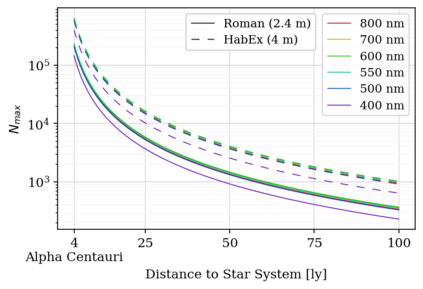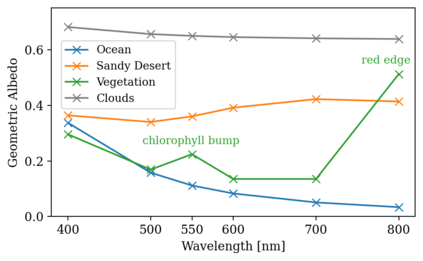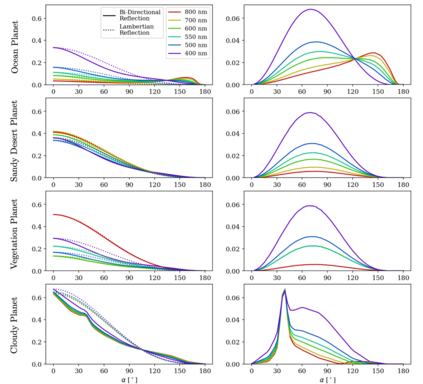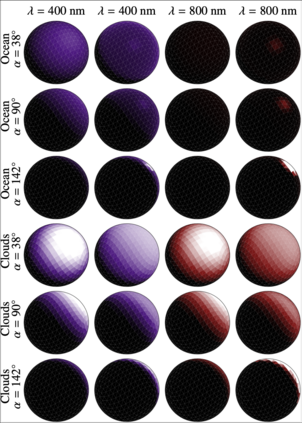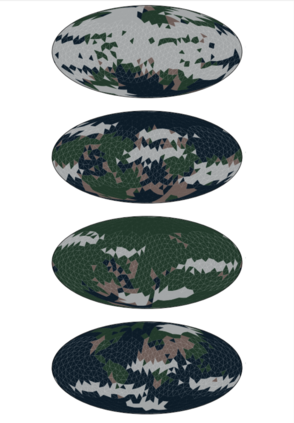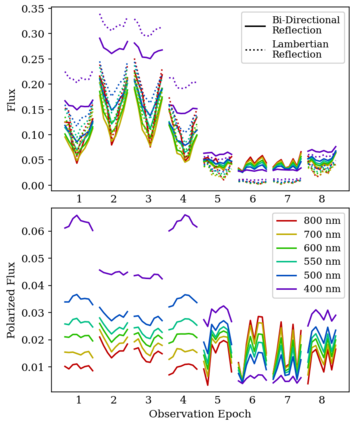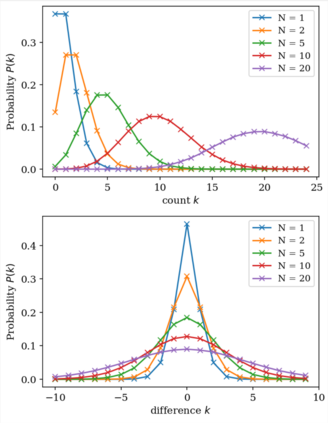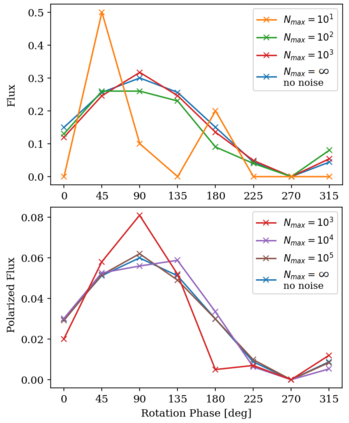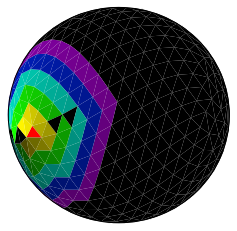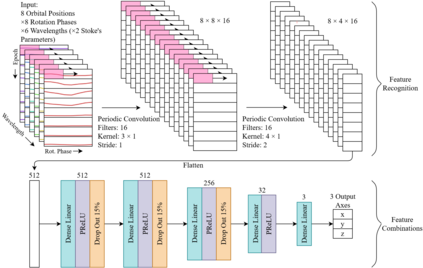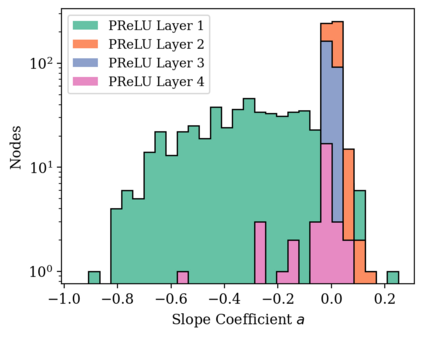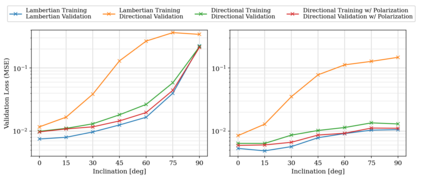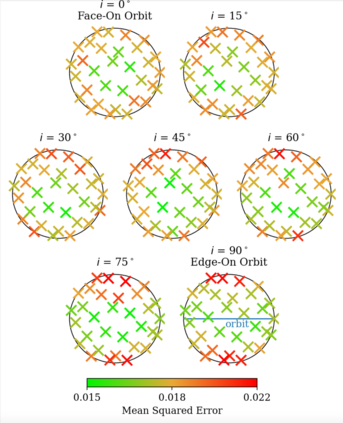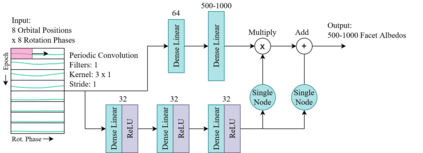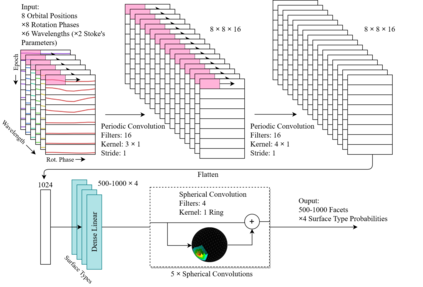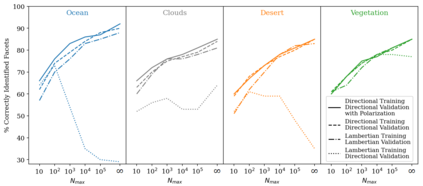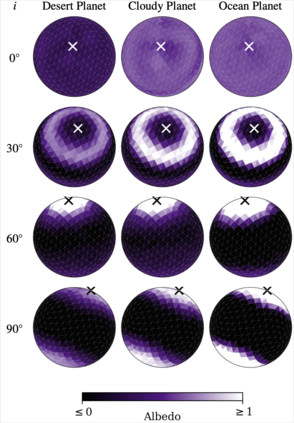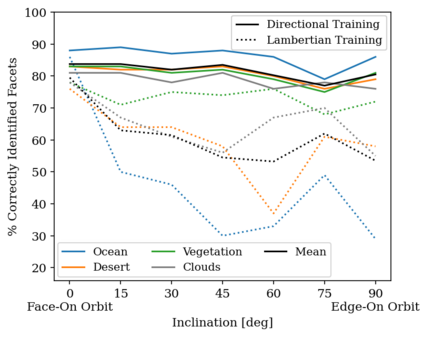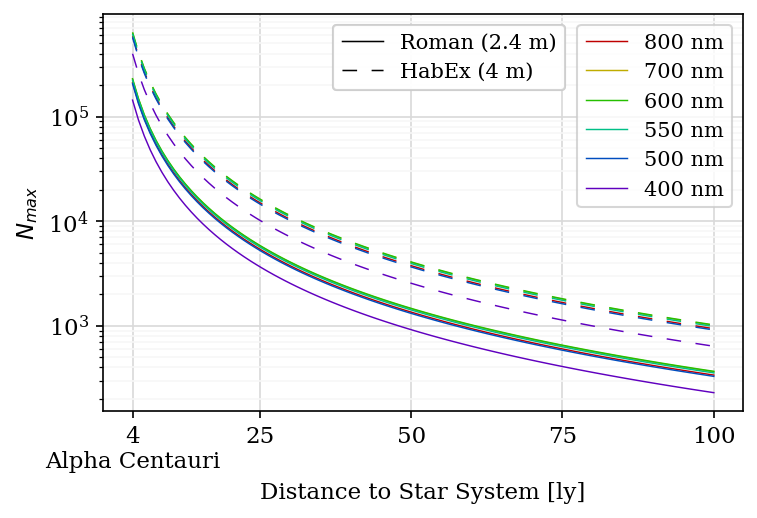In the near-future, dedicated telescopes observe Earth-like exoplanets in reflected light, allowing their characterization. Because of the huge distances, every exoplanet will be a single pixel, but temporal variations in its spectral flux hold information about the planet's surface and atmosphere. We test convolutional neural networks for retrieving a planet's rotation axis, surface and cloud map from simulated single-pixel flux and polarization observations. We investigate the assumption that the planets reflect Lambertian in the retrieval while their actual reflection is bidirectional, and of including polarization in retrievals. We simulate observations along a planet's orbit using a radiative transfer algorithm that includes polarization and bidirectional reflection by vegetation, desert, oceans, water clouds, and Rayleigh scattering in 6 spectral bands from 400 to 800 nm, at various photon noise levels. The surface-types and cloud patterns of the facets covering a model planet are based on probability distributions. Our networks are trained with simulated observations of millions of planets before retrieving maps of test planets. The neural networks can constrain rotation axes with a mean squared error (MSE) as small as 0.0097, depending on the orbital inclination. On a bidirectionally reflecting planet, 92% of ocean and 85% of vegetation, desert, and cloud facets are correctly retrieved, in the absence of noise. With realistic noise, it should still be possible to retrieve the main map features with a dedicated telescope. Except for face-on orbits, a network trained with Lambertian reflecting planets, yields significant retrieval errors when given observations of bidirectionally reflecting planets, in particular, brightness artefacts around a planet's pole. Including polarization improves retrieving the rotation axis and the accuracy of the retrieval of ocean and cloud facets.
翻译:在近未来,专用望远镜用反光来观测类似于地球的远行星。由于距离太远,每个远板将是一个单一像素,但是其光谱通量的时间变异将保持关于地球表面和大气的信息。我们测试模拟的单像素通量和对极化观测中的地球旋转轴、表面和云图。我们调查一种假设,即行星在反射时反映兰伯特在回收中反映其实际反射的双向反射,并在检索中包括两极对等。由于距离太远,每个远板网将是一个单一像素通量和对极分数。我们模拟行星的轨道上的观测将是一个单一像素的像素,而行星的轨道上将出现两极分化和双向反射。我们测试行星轨道上的观测结果,包括植被、沙漠、海洋、海洋、水云云层和雷利的6个光谱波波段从400到800海里散布。覆盖模型行星的表型和云层模式应该以概率分布为基础。我们的网络在进行模拟对数百万个行星的轨道上进行观测时,经过模拟地心变的观察,在检索的轨道上将精确的轨道上的轨道上将观察结果和精确的轨道上反映着一个轨道的轨道的轨道的轨道,以正值的轨道的轨道的轨道,以正值为正值的正值反映。

